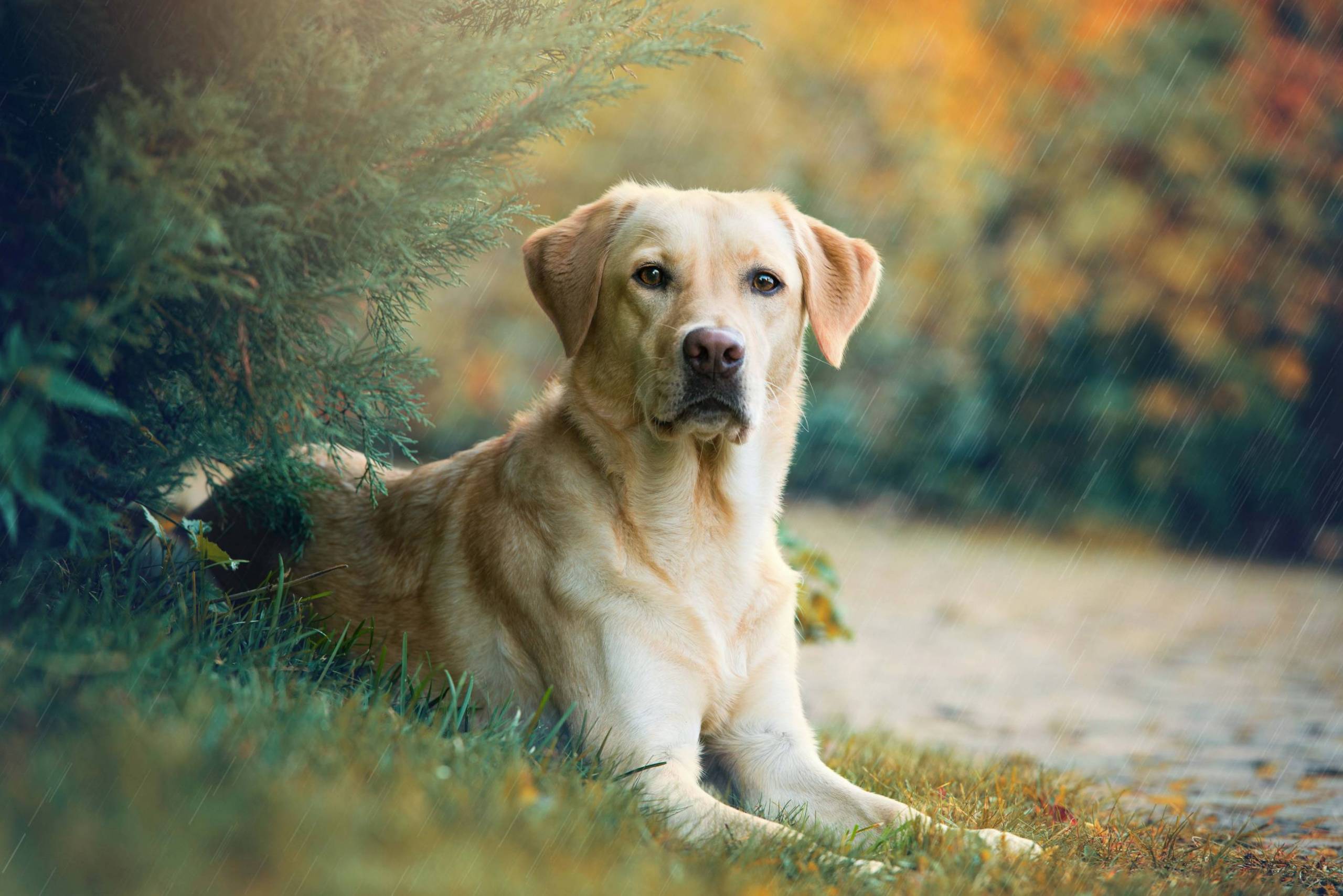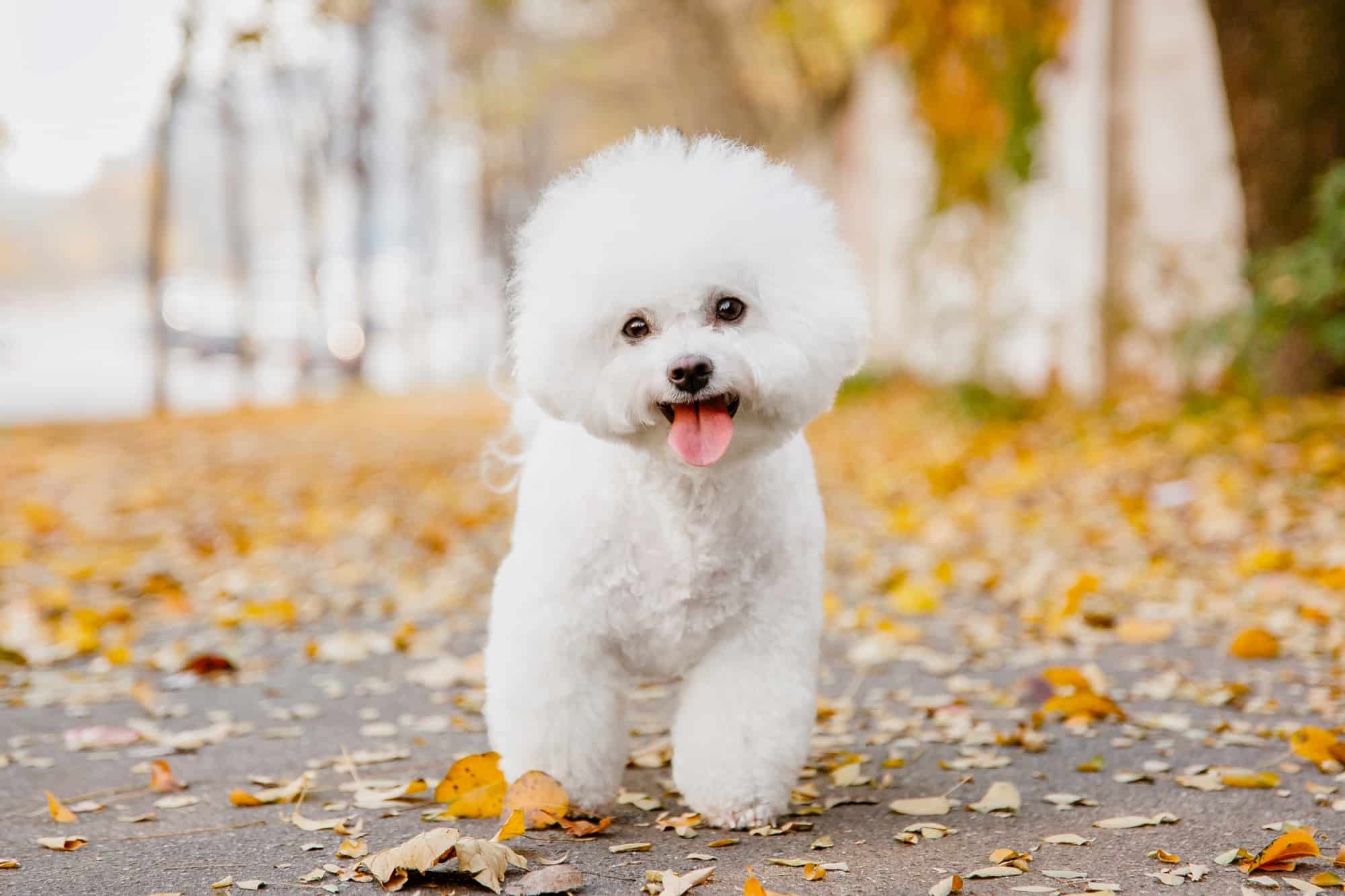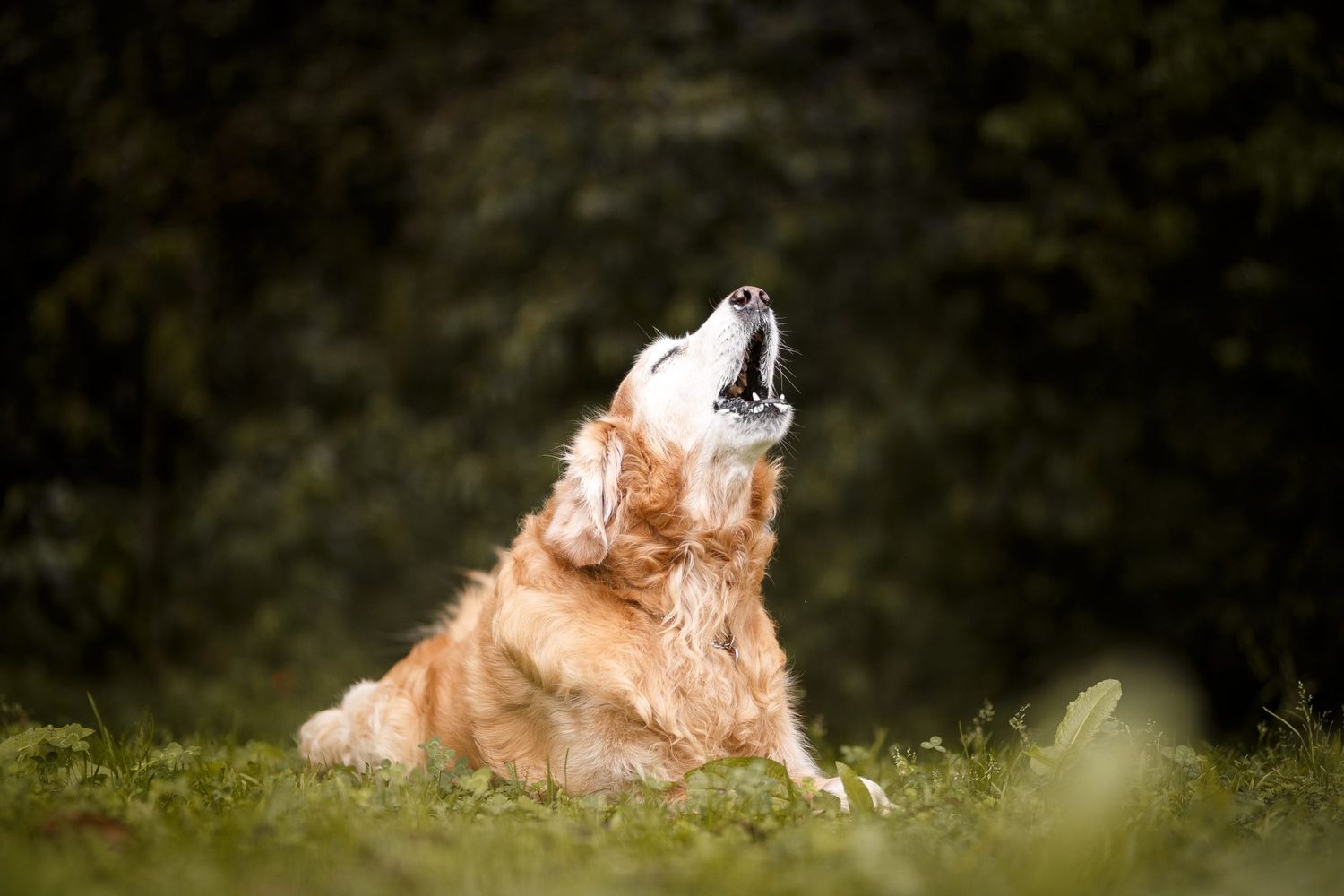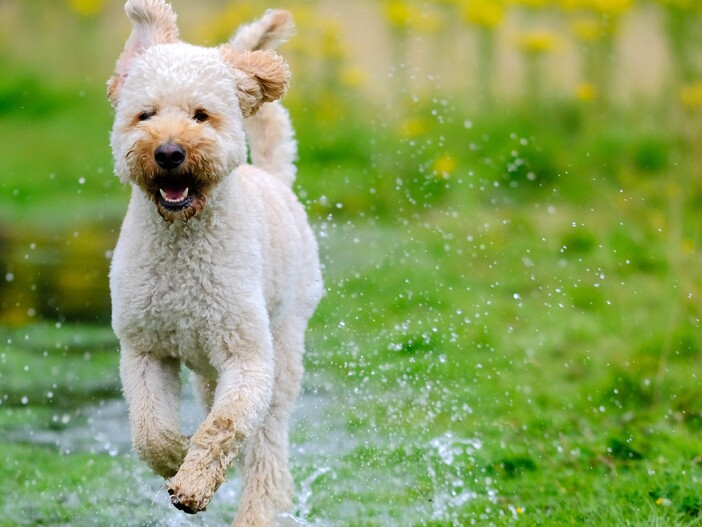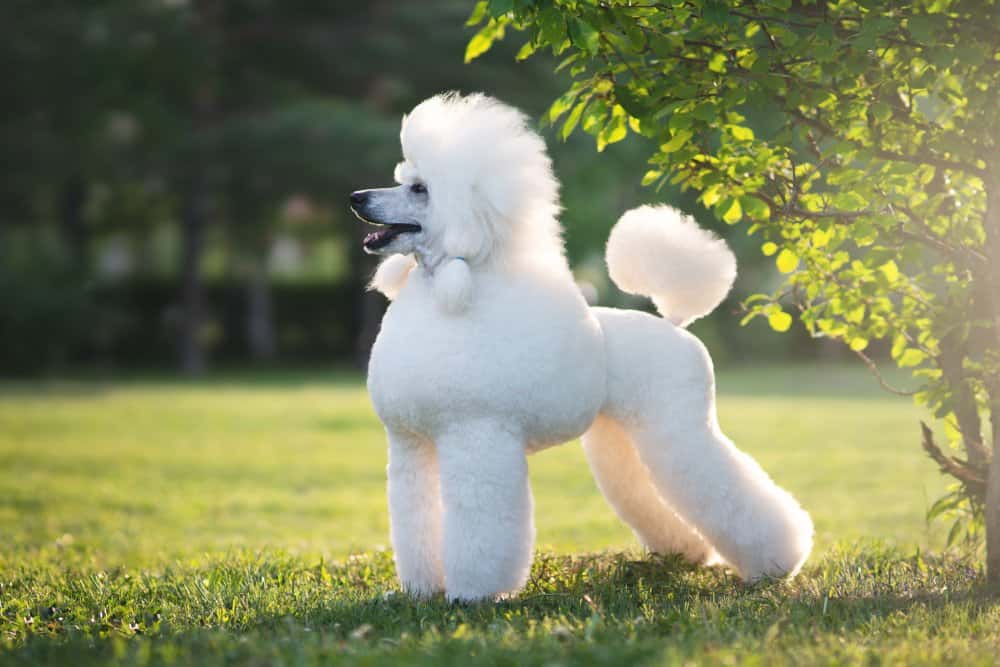Snow dogs are a special group of canines that thrive in cold weather and have a natural affinity for snowy conditions. These breeds have been used for various tasks, including pulling sleds, transporting supplies, and even participating in winter sports.
Here are some of the best types of snow dogs based on their ability to withstand frigid temperatures and their love for the snow.
You are reading: 10 Best Types Of Snow Dogs
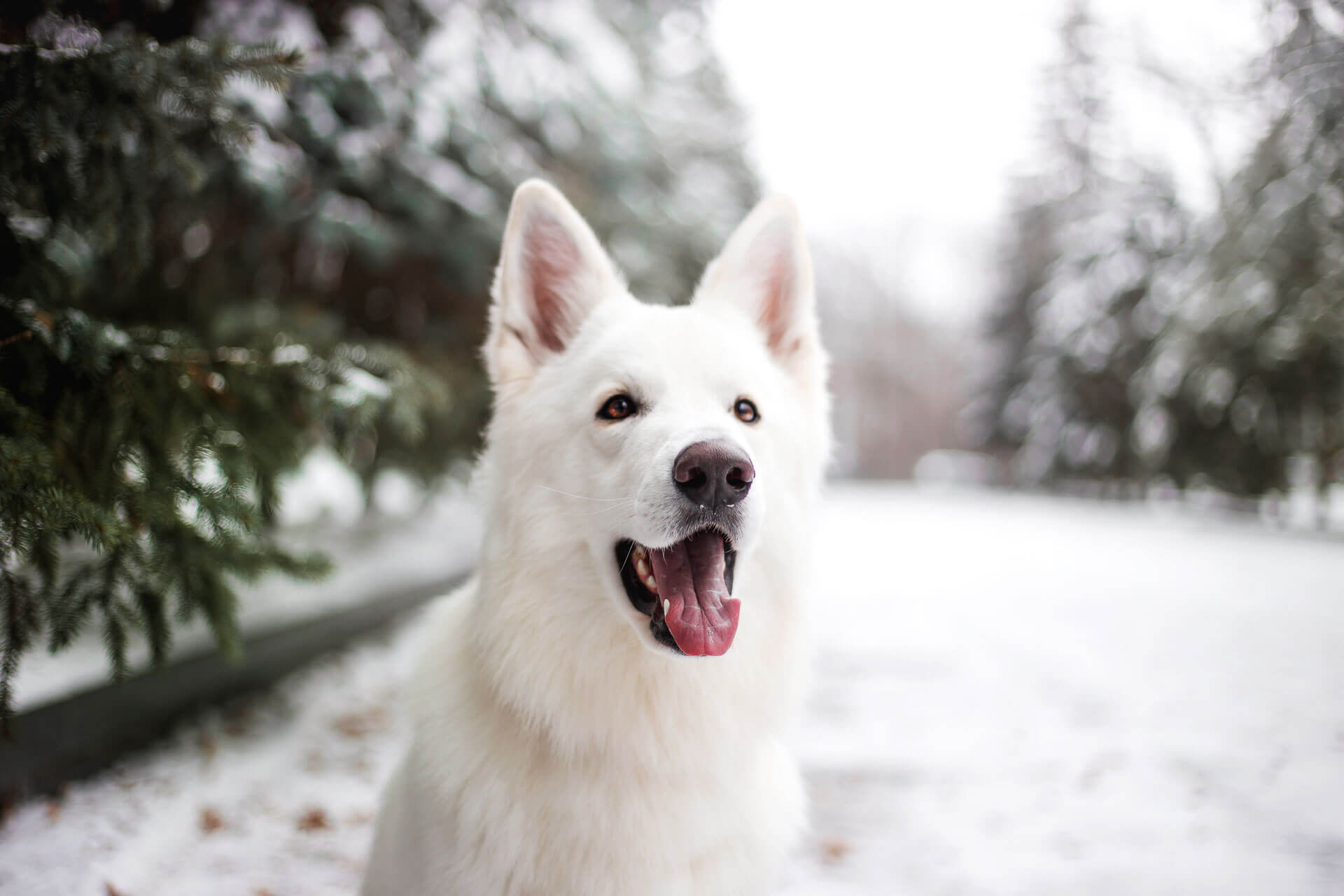
10 Best Types Of Snow Dogs
Alaskan Malamute
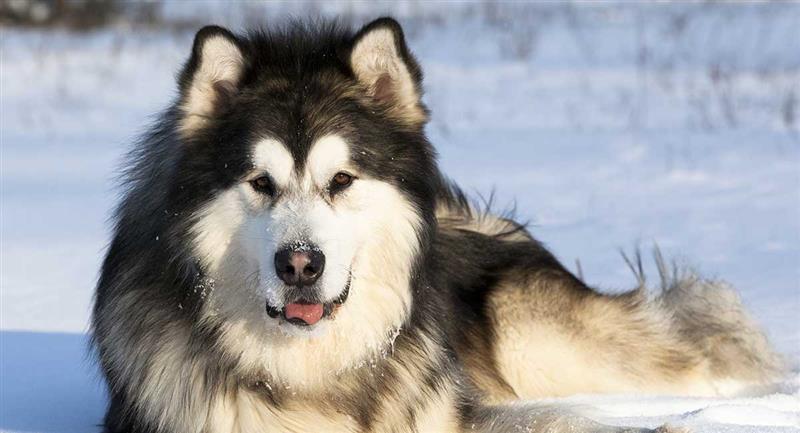
The Alaskan Malamute is a large and powerful breed of dog that was originally bred for its strength and endurance, primarily as a sled dog. Here are some key characteristics and facts about the Alaskan Malamute:
– Origin: The Alaskan Malamute is believed to be a basal breed that predates the emergence of modern breeds in the 19th century. It has a similar East Asian origin to the Greenland Dog and the Canadian Eskimo Dog, but with a possible admixture of the Siberian Husky.
– Appearance: The Alaskan Malamute has a wolf-like appearance, with a broad head, erect ears, and a plumelike tail carried over its back. Its thick double coat is usually gray and white or black and white, with the colors frequently forming a caplike or masklike marking on the head. The breed is larger and more heavily built than the Siberian Husky, which is bred for speed.
– Temperament: Alaskan Malamutes are known for their loyalty, affection, and playful nature. They are generally friendly, but their strong-willed and independent nature can sometimes lead to stubbornness and a desire to dominate those they do not respect. Proper training and socialization are important for this breed.
– Exercise and Training: Alaskan Malamutes are incredibly active and energetic dogs, bred for pulling heavy sleds in harsh Arctic conditions. They have a strong work ethic and need plenty of exercise to stay happy and healthy. Obedience training is highly recommended for this breed.
– Living Environment: Alaskan Malamutes thrive in spacious environments with ample exercise opportunities to stave off boredom and restlessness. While they are happiest living outdoors as long as they receive enough companionship, they also enjoy living indoors where their human “pack” lives.
– Compatibility: Alaskan Malamutes are generally good with children, especially if they are old enough to play with them safely. However, they are not suitable as guard dogs due to their friendly nature. Proper socialization with people and other dogs is imperative for this breed.
Siberian Husky
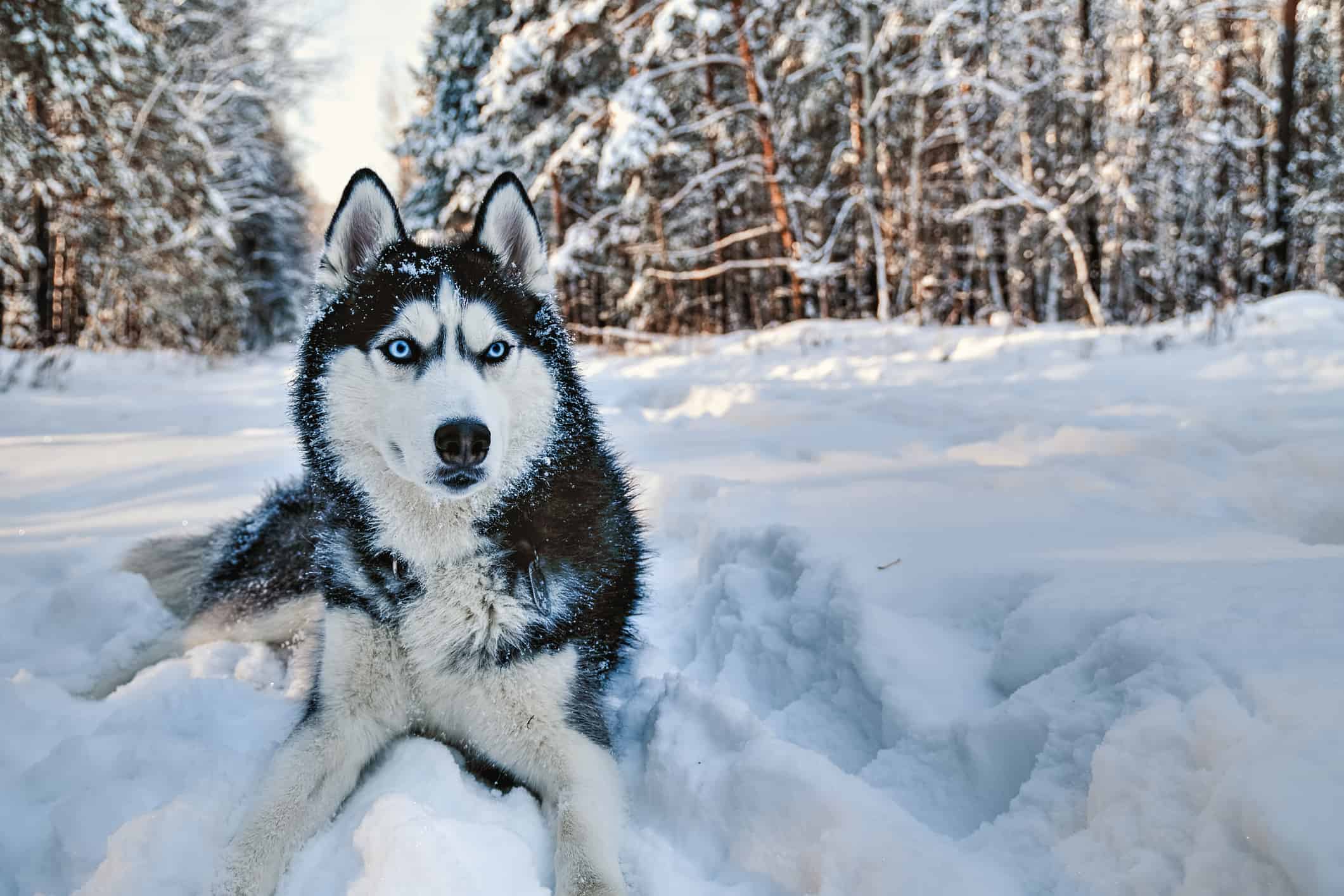
The Siberian Husky is a medium-sized dog breed that originated in Siberia, Russia. Here are some key characteristics and facts about the Siberian Husky:
Appearance:
– Siberian Huskies have a thick, double coat that is designed for cold weather. The coat can be any color, from black to white, and may have markings on the head that resemble a cap, mask, or spectacles.
– They have erect ears and eyes that can be brown or blue, or even one of each color.
– Males typically weigh between 45-70 pounds and stand 21-23.5 inches tall at the withers, while females weigh between 35-60 pounds and stand 20-22 inches tall.
Temperament:
– Siberian Huskies are known for their friendly and outgoing nature. They are intelligent, independent, and can have a mischievous streak.
– They usually get along well with people and other dogs, but their independent nature can sometimes make them difficult to train.
– They are active and require at least one to two hours of exercise daily. They enjoy activities like dog sledding, skijoring, and bikejoring.
Living Environment:
– Siberian Huskies thrive in spacious environments with ample exercise opportunities to stave off boredom and restlessness.
– They are not well-suited for apartment living and need plenty of outdoor space to run and play.
Grooming:
– Siberian Huskies have a heavy shedding coat, particularly during shedding seasons. Regular brushing helps manage shedding, and extra attention might be needed during shedding periods.
Health:
– Siberian Huskies are generally a healthy breed, but they can be prone to certain conditions like hip dysplasia and eye issues.
– Regular exercise and a well-balanced diet are essential for their overall health.
Siberian Huskies are a beautiful and friendly breed that requires plenty of exercise and outdoor space to thrive. They are intelligent and independent, but their mischievous streak and stubbornness can sometimes make them difficult to train. Proper socialization and training are important for this breed.
Bernese Mountain Dog
The Bernese Mountain Dog, also known as the Berner Sennenhund or Bernese Cattle Dog, is a large and sturdy breed originating from Bern, Switzerland, and the Swiss Alps. Here are some key characteristics and facts about this breed:
– Appearance: Bernese Mountain Dogs have a long, thick, and tri-colored coat, with black, brown, and white markings. They are known for their striking beauty and the white “Swiss cross” on their chest.
– Size: Adult Berners typically stand 23 to 27.5 inches (58 to 70 cm) tall at the withers and weigh about 88 pounds (40 kg) on average.
– Temperament: Bernese Mountain Dogs are gentle, affectionate, and even-tempered. They are known for their loyalty and eagerness to please their families. With proper socialization, they can be open to meeting strangers and are generally good with children and other pets.
– Working Background: These dogs were originally used for pulling carts, herding cattle, and guarding property in the Swiss Alps. They are well-suited for heavy work and have a strong work ethic.
– Exercise and Grooming: Berners require about an hour of walking or playing during the cool parts of the day. They enjoy activities like carting, swimming, and nose work. Coat care consists of weekly brushing and occasional bathing, with more frequent brushing during shedding seasons.
– Health and Lifespan: The average lifespan of a Bernese Mountain Dog is 7 to 10 years. They are prone to certain health issues, including hip and elbow dysplasia, cancer, and bloat. Reputable breeders prioritize the health and temperament of their dogs, conducting necessary health screenings to ensure the well-being of the puppies.
– Trainability: Berners are intelligent and eager to please, making them relatively easy to train. Positive reinforcement methods work best with this breed.
– Watchdog Abilities: Bernese Mountain Dogs can be protective and make good watchdogs due to their size and deep bark. However, some individuals may bark more than desired, so early training and socialization are important for proper behavior.
American Eskimo Dog
The American Eskimo Dog, also known as the “Eskie,” is a breed of companion dog that originated in Germany. It is a member of the Spitz family and shares a common resemblance with Japanese Spitz, Danish Spitz, Volpino Italiano, German Spitz, Indian Spitz, and Samoyeds.
Read more : How To Tame A Fox And Build A Dog
The breed’s progenitors were German Spitz, but due to anti-German sentiment during World War I, it was renamed “American Eskimo Dog”. Although modern American Eskimo Dogs have been exported as German Spitz Gross or Mittel, the breeds have diverged, and the standards are significantly different.
The American Eskimo Dog comes in three size varieties: toy, miniature, and standard. They have a striking appearance with a white coat, sweet expression, and black eyes.
Their wedge-shaped head, erect triangular-shaped ears, and heavily plumed tail curled over the back are some of their distinctive features. The breed is often described as a miniature Samoyed.
In addition to being a companion, the American Eskimo Dog was popular as a circus performer in the United States during the 1930s and 1940s.
They are highly intelligent, playful, and love vigorous exercise. Due to their natural suspicion of strangers, they make excellent watchdogs. However, they can be prone to excessive barking and need proper socialization to prevent them from becoming overly wary of strangers.
The American Eskimo Dog is an affectionate and loving breed that is excellent with children. They are highly trainable and often rank among the top scorers in obedience trials. To ensure their well-being, they need to be part of a family with a firm, consistent, and confident pack leader.
Saint Bernard
The Saint Bernard is a breed of very large working dog from the Western Alps in Italy and Switzerland. They were originally bred for rescue work by the hospice of the Great St Bernard Pass on the Italian-Swiss border. The breed is recognized internationally by the Fédération Cynologique Internationale as a Molosser in Group 2, Section 2.
The Saint Bernard is a gentle, loyal, and affectionate breed, known for its large size and gentle temperament. It is recognized by various kennel clubs, including The Kennel Club (UK), the Canadian Kennel Club, and the American Kennel Club. The breed is also known for its deep roots in myth and legend.
Some key characteristics of the Saint Bernard include:
– Size: The Saint Bernard is a powerful, giant-sized dog. Male Saint Bernards typically weigh between 120-200 lbs, while females weigh between 120-200 lbs. The height at the withers is around 27 inches for males and 25 inches for females.
– Coat: The breed has a double coat, with a medium length. The colors of the coat can be red and white or brindle and white.
– Temperament: Saint Bernards are known for their gentle and hospitable nature, despite their imposing size and strength. They are loving, placid dogs, and their instinctive friendliness often offsets a stranger’s initial fear of approaching such a large dog.
– Exercise and Energy Level: The Saint Bernard does not require a lot of exercise and has a low energy level. They are not suitable as jogging companions and may wilt in hot climates. However, they enjoy playing in the snow and are generally happy in a good romp.
– Training and Socialization: Proper training and socialization should begin while the Saint Bernard is still a puppy, due to its large adult size. An unruly Saint Bernard may present problems, even for experienced dog owners.
– Health: The breed has a shorter than average canine lifespan and can suffer from a variety of genetic diseases and disorders. They are prone to heat exhaustion and should have access to shade and plenty of fresh, cool water during hot weather.
Newfoundland
The Newfoundland is a large and gentle dog breed with a rich history and exceptional water rescue abilities. Here are some key characteristics and facts about Newfoundlands:
– Size and Weight: Newfoundlands are considered a giant breed, with males standing 28 inches tall and weighing 130 to 150 pounds, and females being slightly smaller, weighing 100 to 120 pounds.
– Temperament: Newfoundlands are known for their sweet, loving, and mild-tempered disposition. They are intelligent, friendly, and very loyal. These dogs are generally great around children, thanks to their calm and gentle nature.
– Water Rescue Abilities: One of the defining characteristics of Newfoundlands is their webbed feet, which, combined with their powerful swimming strokes, make them excellent swimmers. They have a natural instinct and ability to rescue people in water, making them a popular choice for lifeguarding and water rescue operations.
– Coat and Grooming: Newfoundlands have a flat, water-resistant double coat, consisting of a coarse and long outer coat and a soft and dense undercoat. Shedding is moderate, with the heaviest shedding occurring in the spring and fall seasons. Proper coat maintenance involves regular brushing to remove loose fur and prevent mats.
– Exercise and Energy Level: Newfoundlands have a moderate energy level and don’t require excessive amounts of exercise and play each day. They do, however, need daily human contact and should not be left alone for extended periods or isolated in the backyard or kennel.
– Health: Newfoundlands are prone to some common health conditions, including hip dysplasia, heart disease, cystinuria (which can cause stones in the kidneys, ureters, and bladder), and ear infections. They have a lifespan of 8 to 10 years.
– Trainability: While Newfoundlands are intelligent and willing to please, they can be somewhat slow to respond. However, they are generally one of the easier giant breeds to train.
Labrador Retriever
The Labrador Retriever is a medium to large dog breed known for its friendly, outgoing, and high-spirited nature. Here are some key characteristics of Labrador Retrievers:
– Coat: Labrador Retrievers have a short, dense, and water-resistant double coat. The acceptable coat colors according to the AKC breed standard are black, chocolate, and yellow. However, some breeders may produce Labradors in other colors, such as white, silver, or charcoal, although these colors are not recognized by the AKC.
– Body: Labradors have a powerful and muscular build, with a broad head, drop ears, and large, expressive eyes. One of their distinguishing features is their “otter tail,” which is thick, sturdy, and almost straight.
– Temperament: Labrador Retrievers are friendly, outgoing, and have a gentle nature. They are often described as one of the most family-friendly dog breeds and are great with children and other pets. Labs are intelligent, easy to train, and make excellent companions. They are not aggressive towards humans or animals.
– Exercise Needs: Labrador Retrievers are active dogs that require regular exercise and mental stimulation. They enjoy activities like fetch, swimming, and hiking. Labs have a high energy level and like to have a job or activity to keep them engaged.
– Size: The Labrador Retriever is a medium to large dog breed, with males typically reaching a maximum height of 24 inches and females reaching a maximum height of 23.5 inches. Male Labs can weigh between 65 to 80 pounds, while females can weigh between 55 to 70 pounds.
– Lifespan: Many Labrador Retrievers live to be 12 to 14 years old.
Read more : Why Does My Dog Grunt Like A Pig?
– Versatility: Labrador Retrievers have a history of being versatile working dogs, shifting from a fisherman’s companion to a field retriever, show dog, and modern working dog. They are employed in various roles, including service dogs, therapy dogs, drug and explosive detection, water rescue, and search and rescue.
Tibetan Terrier
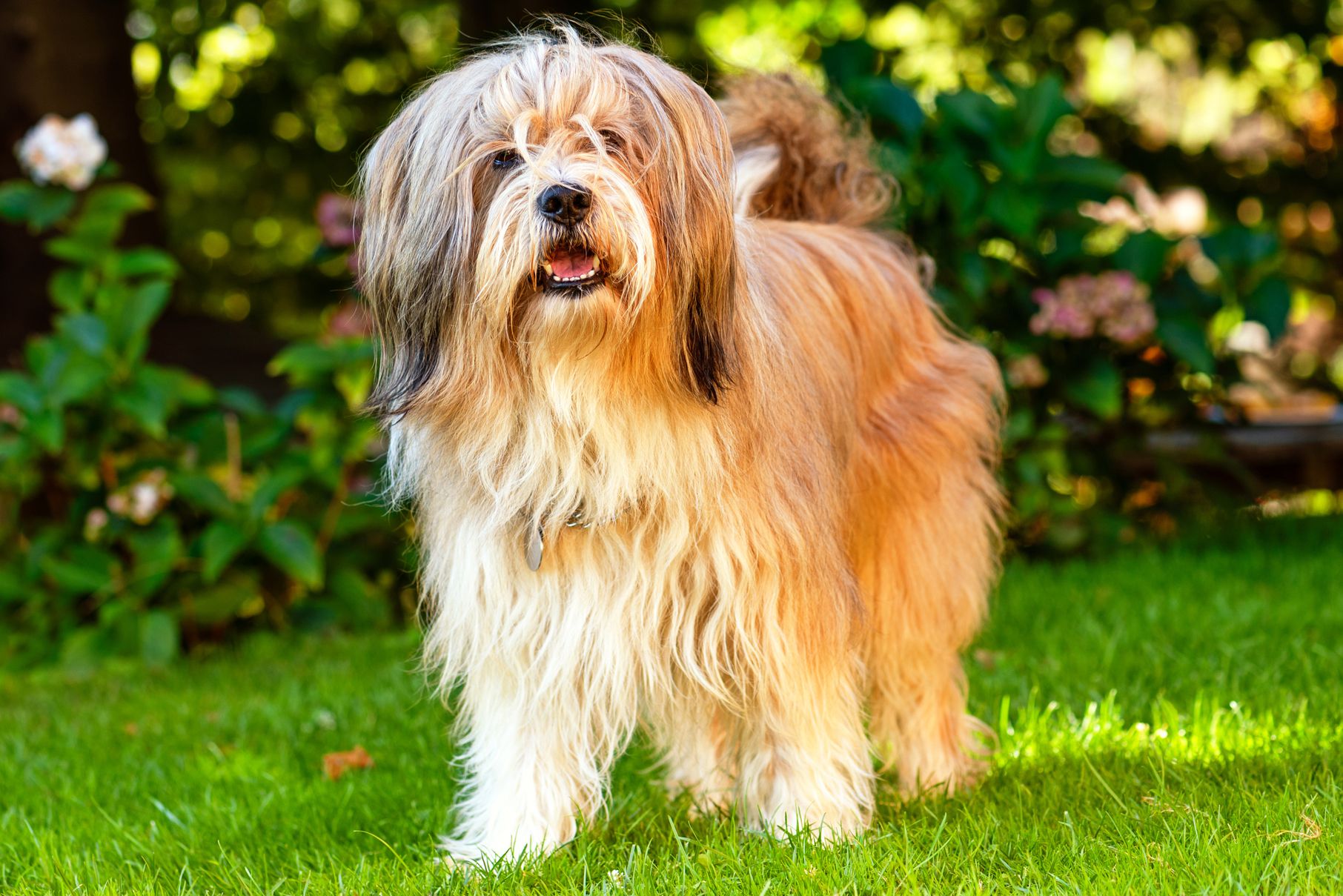
The Tibetan Terrier is a medium-sized dog breed that originated in Tibet. Despite its name, it is not a member of the terrier group. Tibetan Terriers have been bred and raised in monasteries of Tibet for 2,000 years and were kept as good luck charms, mascots, watchdogs, herding dogs, and companions.
They were also used to retrieve articles that fell down mountainsides. Tibetan Terriers are related to and have contributed to the development of other breeds, including the Shih Tzu, Lhasa Apso, Tibetan Spaniel, and Polish Lowland Sheepdog.
– Appearance: The Tibetan Terrier is a powerful, medium-sized dog of square proportions, with a shaggy coat. They vary widely in height and weight, ranging from 14 to 16 inches (35–41 cm) and 18–30 pounds (8–14 kg), with 20–24 pounds (9.5–11 kg) preferred for either sex. All weights are acceptable if in proportion to the size. Fully grown, the Tibetan Terrier resembles a miniaturized Bearded Collie. The head is moderate, with a strong muzzle of medium length, and a skull neither rounded nor flat.
– Temperament: Tibetan Terriers are smart, pleasant, and affectionate. They are gentle but fun-loving, dedicated to their family, and may be cautious or reserved toward strangers. They make excellent family companions and are known for their lively and friendly temperament. Puppies are active and lively but settle down as they reach maturity. True to their heritage, they make wonderful watchdogs and will bark an alert if they see or hear anything.
– Behavior: Tibetan Terriers are family-oriented and love to play games and participate in activities with their own people. Most are conservative with strangers, and in some individuals, caution can shade into timidity or suspiciousness, so early socialization is important to develop a confident, outgoing temperament. They are usually amiable with other pets, though they can be a bit bossy. Tibetan Terriers are known for being very stubborn and must be shown from Day One that you are in control.
– Care: Tibetan Terriers have a long, double coat that requires regular grooming to prevent matting and keep it looking its best. They are a moderate dog in all respects and can adapt to any home, city, or country, as long as they are given brisk daily walks and occasional romps in a safe enclosed area. They especially enjoy playing in the snow, as their large, flat, snowshoe-like feet provide traction, and their long, heavy eyelashes protect their eyes.
Great Pyrenees
The Great Pyrenees, also known as the Pyrenean Mountain Dog, is a large and powerful working dog breed. Here are some key characteristics and facts about the Great Pyrenees:
– Origin: The Great Pyrenees originated in the Pyrenees Mountains, which form a natural border between France and Spain. The breed’s history as a guard dog of sheep dates back to ancient times, and it is believed to have descended from the Hungarian Kuvasz and the Maremmano-Abruzzese.
– Size: Great Pyrenees are giant dogs, with males typically standing between 27 to 32 inches tall and females between 25 to 29 inches tall.
– Coat: The Great Pyrenees has a double coat, with a long and thick top coat that should be coarse in texture. The coat may be straight or slightly wavy, but it should not be curly.
– Temperament: Great Pyrenees are known for their calm, gentle, and independent nature. They are devoted to their families, including children, and are generally well-mannered and serious. The breed can be somewhat wary of strangers, both human and canine, and is often used as a livestock guardian.
– Training: Training a Great Pyrenees requires consistency, patience, and positive reinforcement. They are not suitable for owners who are reluctant to put in the necessary time and effort. However, their hard work and independent nature make them excellent family companions or career dogs.
– Health: Great Pyrenees are generally a healthy breed, but they can be prone to certain health concerns. Some of the common health issues in Great Pyrenees include hip dysplasia, elbow dysplasia, bloat, and certain eye conditions. Regular veterinary check-ups and a balanced diet are important for maintaining their overall health and well-being.
Leonberger
The Leonberger is a giant dog breed that originated in Germany, specifically in the city of Leonberg in Baden-Württemberg. Here are some key characteristics and facts about the Leonberger:
– Appearance: The Leonberger is a large, muscular, and elegant dog with a balanced body type, medium temperament, and a dramatic presence. It has a generous double coat, with a long, thick, and lion-like appearance that can be golden, red, or brown. The head is adorned with a striking black mask, and the breed is known for its distinct expression of intelligence, pride, and kindliness.
– Origin: In the 1830s, Heinrich Essig, a dog breeder and mayor of the town of Leonberg, claimed to have created the Leonberger by crossing a female Landseer Newfoundland with a “barry” male from the Great St Bernard Hospice and Monastery (which would later create the Saint Bernard). This mix of the Newfoundland, longhaired Saint Bernard, and Great Pyrenees resulted in the jumbo-sized Leonberger we know today.
– Temperament: Leonbergers are known for their loyalty, intelligence, and trainability. They have a gentle nature, serene patience, and they relish the companionship of the whole family. While they are generally gentle, they can be protective of their families and homes.
– Size and Weight: Male Leonbergers typically weigh between 100-150 pounds and stand 28 1/2 to 31 1/2 inches tall at the shoulder, while females are smaller, weighing between 90-140 pounds and standing 25 1/2 to 29 1/2 inches tall.
– Exercise and Grooming: Leonbergers require a lot of exercise and grooming due to their large size and long, thick coat. They love activities such as agility, carting, sledding, backpacking, and swimming. This breed is ideal for a guardian who wants a large, active dog that can be taken on various outdoor adventures.
FAQS
1. What are the best types of dogs for snowy climates?
There are many types of dogs that enjoy playing in the snow, but certain dog breeds were literally built and born for a winter wonderland. These dogs were bred to live and work in cold climates, enduring entire days spent in snowy landscapes, herding, tracking, and standing watch. Some of the best types of dogs for snowy climates include the Siberian Husky, Samoyed, Great Pyrenees, Saint Bernard, Newfoundland, Norwegian Elkhound, American Eskimo Dog, Keeshond, Tibetan Terrier, and Alaskan Malamute.
2. What are common traits among snow dogs?
Snow dogs are good learners, good listeners, and very social. Most breeds that love the snow originated in cold, snowy regions and were bred to do jobs in the snow, like sled dogs. They are intelligent, devoted, and have a zest for life.
3. Do snow-loving dog breeds need a job?
While snow dog breeds were made for cold weather, they aren’t impervious to it. When the temperature drops below 68 degrees Fahrenheit, some dogs may have difficulty maintaining their body temperature. However, snow dogs with their thick coats can better tolerate lower temps. Most experts recommend not leaving any dog—snow dog or otherwise—outdoors for a prolonged period in extreme weather conditions. Snow dogs do not necessarily need a job, but they do require regular exercise and mental stimulation to keep them healthy and happy.
4. What are some tips for taking care of snow dogs?
Snow dogs require regular grooming to prevent matting and keep their coats looking their best. They also need regular exercise and mental stimulation to keep them healthy and happy. When taking your snow dog outside in the winter, be sure to protect their paws from the cold and ice with booties or paw balm. Additionally, be sure to provide them with plenty of fresh water and a warm, dry place to rest after playing in the snow.
Source: https://petstutorial.com
Category: DOGS


